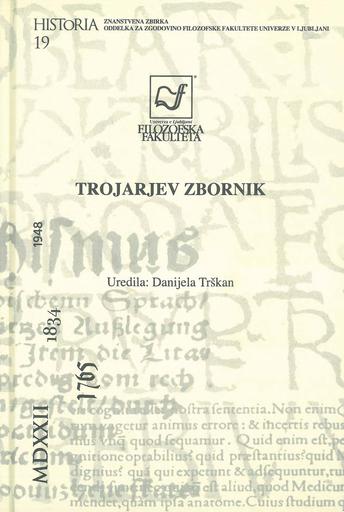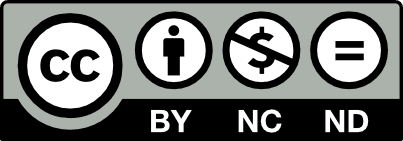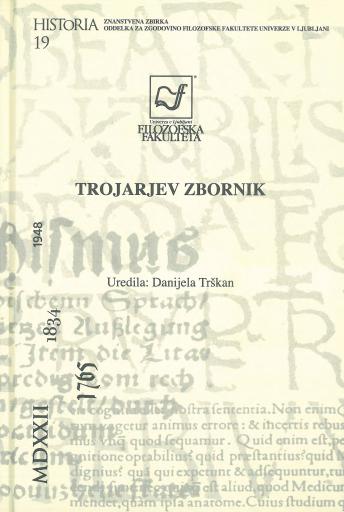/
Literatura
/
Monografije
Položaj učiteljev v srednjeveškem Dubrovniku

Avtor(ji):Ignacij Voje
Soavtor(ji):Danijela Trškan (ur.), Darja Pipuš Sunesko (prev.), Danijela Trškan (prev.)
Leto:2011
Založnik(i):Oddelek za zgodovino Filozofske fakultete Univerze v Ljubljani, Ljubljana
Vir(i):Trojarjev zbornik
Jezik(i):slovenščina
Vrst(e) gradiva:besedilo
Ključne besede:učitelj, humanizem, reforma šolstvva, plače, šolnine, učilnice, metode poučevanja, srednjeveški Dubrovnik, teacher, humanism, school reform, tuition, School Act, methods of teaching, medieval Dubrovnik
Zbirk(e):Historia: znanstvena zbirka Oddelka za zgodovino Filozofska fakultete v Ljubljani; 19
Avtorske pravice:

To delo avtorja Ignacij Voje je ponujeno pod Creative Commons Priznanje avtorstva-Nekomercialno-Brez predelav 4.0 Mednarodna
Datoteke (2)
Povezava:383

Ime:Trojarjev_zbornik.pdf
Velikost:94.84MB
Format:application/pdf
Stalna povezava:https://hdl.handle.net/11686/file17922
Opis
There are many stages in the development of the school system in Dubrovnik in the Middle Ages. We know very little about the schools of Dubrovnik before 1333. The schools for the education of altar boys and other clerical youth were in monasteries. To a limited extent also private teachers helped literate the young. Then on March 6th 1333 Mali svet (small council) first discussed of a community teacher in Dubrovnik. They hired Nikolai from Verona as a magister gramaticus. He was paid 10 perpers per year, and there was also a special tuition paid by the children. The coming of this teacher to Dubrovnik is seen as the beginning of the first public town school. In 1385 master Karlo Jacobi di Scanello from Bologna was named as a teacher. He was also the first state official - salariat. The school system became the state’s and teachers government officials. They got an increase in pay, but terminated the tuition. In 1412, there was another change in the school system of Dubrovnik. Classes were divided into two stages. At the lower stage, a teacher taught reading and writing, at the higher stage grammar, rhetoric and philosophy. The central person and one of the reformers of the school system in Dubrovnik was the Italian humanist Filip de Diversis de Quartigiani from Lucca. By then the people of Dubrovnik got their first Act on Schools (1435) and the school obtained new spacious classrooms. Lessons for primary schools stayed the same, whereas secondary school education divided into two branches: commercial and humanistic. According to the idea of Filip de Diversisa, this was the first humanistic school in Dubrovnik. From very early on in Dubrovnik, there must have been a special Slavic school, where the people of Dubrovnik learnt Cyrillic alphabet.
Metapodatki (13)
- identifikatorhttps://hdl.handle.net/11686/31002
- naslov
- Položaj učiteljev v srednjeveškem Dubrovniku
- The Position of Teachers in Medieval Dubrovnik
- ustvarjalec
- Ignacij Voje
- soavtor
- Danijela Trškan (ur.)
- Darja Pipuš Sunesko (prev.)
- Danijela Trškan (prev.)
- predmet
- učitelj
- humanizem
- reforma šolstvva
- plače
- šolnine
- učilnice
- metode poučevanja
- srednjeveški Dubrovnik
- teacher
- humanism
- school reform
- tuition
- School Act
- methods of teaching
- medieval Dubrovnik
- opis
- V razvoju šolstva v srednjeveškem Dubrovniku razlikujemo več faz. O dubrovniških šolah vse do leta 1333 ne vemo skoraj nič. Šole za vzgojo duhovniškega naraščaja so bile v samostanih. V omejenem obsegu so opismenjevanje mladine opravljali privatni učitelji. V Dubrovniku so o občinskem učitelju prvič razpravljali v Malem svetu 6. marca 1333. V službo je bil sprejet Nikolai z Verone kot magister gramaticus. Določili so mu 10 perperjev letne plače, posebno šolnino pa so morali plačevati tudi otroci. Prihod tega učitelja v Dubrovnik naj bi pomenil začetek delovanja javne mestne šole. Leta 1385 je bil imenovan za učitelja magister Karlo Jacobi di Scanello iz Bologne. Bil je prvi državni uradnik - salariat. Šolstvo postaja državno, učitelji so državni uradniki. Povečali so jim plačo, a ukinili šolnino. Leta 1412 je prišlo na področju dubrovniškega šolstva do nove spremembe. Pouk se je delil na dve stopnji. Učitelj je na nižji stopnji učil otroke branja in pisanja, na višji stopnji pa gramatiko, retoriko in filozofijo. Osrednja osebnost in eden od reformatorjev dubrovniškega šolstva je bil italijanski humanist Filip de Diversis de Quartigiani iz Lucce. Takrat so dobili Dubrovčani prvi zakon o šolah (1435) in šola je dobila nove prostorne učilnice. Osnovnošolski pouk je ostal nespremenjen, srednješolski se je delil na dve veji: na trgovsko in humanistično smer. Po zamisli Filipa da Diversisa naj bi bila to prva humanistična šola v Dubrovniku. V Dubrovniku je morala že zelo zgodaj delovati posebna slovanska šola, kjer so se Dubrovčani učili cirilico.
- There are many stages in the development of the school system in Dubrovnik in the Middle Ages. We know very little about the schools of Dubrovnik before 1333. The schools for the education of altar boys and other clerical youth were in monasteries. To a limited extent also private teachers helped literate the young. Then on March 6th 1333 Mali svet (small council) first discussed of a community teacher in Dubrovnik. They hired Nikolai from Verona as a magister gramaticus. He was paid 10 perpers per year, and there was also a special tuition paid by the children. The coming of this teacher to Dubrovnik is seen as the beginning of the first public town school. In 1385 master Karlo Jacobi di Scanello from Bologna was named as a teacher. He was also the first state official - salariat. The school system became the state’s and teachers government officials. They got an increase in pay, but terminated the tuition. In 1412, there was another change in the school system of Dubrovnik. Classes were divided into two stages. At the lower stage, a teacher taught reading and writing, at the higher stage grammar, rhetoric and philosophy. The central person and one of the reformers of the school system in Dubrovnik was the Italian humanist Filip de Diversis de Quartigiani from Lucca. By then the people of Dubrovnik got their first Act on Schools (1435) and the school obtained new spacious classrooms. Lessons for primary schools stayed the same, whereas secondary school education divided into two branches: commercial and humanistic. According to the idea of Filip de Diversisa, this was the first humanistic school in Dubrovnik. From very early on in Dubrovnik, there must have been a special Slavic school, where the people of Dubrovnik learnt Cyrillic alphabet.
- založnik
- Oddelek za zgodovino Filozofske fakultete Univerze v Ljubljani
- zbirka
- Historia: znanstvena zbirka Oddelka za zgodovino Filozofska fakultete v Ljubljani; 19
- datum
- 2011
- tip
- besedilo
- jezik
- Slovenščina
- jeDelOd
- pravice
- licenca: ccByNcNd
